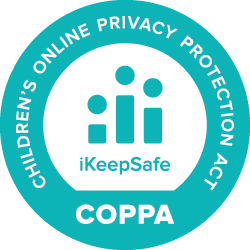Aluminum
It's not quite as quick as flipping a top, but aluminum is one of the easiest materials to recycle.
Resource Title:
Aluminum
Description:
In this activity, students will learn how aluminum is recycled and used to create new products.
Target Grade Level:
Grades K - 12
Discipline or Course (Audience):
Science
Time Frame:
One 45-minute session
Suggested Grouping:
Individual, Pairs, or 3-4 students
Key Vocabulary:
- Alloy: A mixture of metals or a mixture of a metal and another element. Aluminum is often used in alloys to create materials with specific properties.
- Bale: A compressed bundle of recyclable material, such as aluminum cans, held together with wire or banding. This process makes it more efficient to transport and process large quantities of recyclable materials.
- Closed-loop recycling: A system in which a product is recycled back into the same product. A prime example is aluminum cans being recycled into new aluminum cans.
- Ferrous: Containing or consisting of iron. Ferrous metals are typically magnetic and susceptible to rust.
- Non-ferrous metal: Any metal that is not primarily composed of iron. Aluminum is a non-ferrous metal, which means it is not magnetic and is resistant to rust.
- Recycling: The process of converting waste materials into reusable materials. In the context of aluminum, this involves melting down used aluminum products and reforming them into new products.
Educator Prep:
Familiarize yourself with all materials, concepts, and vocabulary.
Special Population Accommodations:
- Follow district guidelines for supporting ELL students. Consider sensory supports such as physical movement or podcasts. Pre-teach vocabulary within the content.
- Follow district guidelines for supporting GT students. Gifted students thrive when given choices and opportunities to explore the complexities of the content. Encourage students to explore across disciplines. Provide executive functioning support and check-in as needed.
- Follow required accommodations based on student IEPs.
Remote Learning Adaptations:
This resource is appropriate for remote learning; no adaptations or modifications are necessary.
STUDENT CONTENT BELOW THIS LINE
Quick, what is one of the easiest materials to recycle? If you said aluminum, you were right!
Materials:
- Device with internet access
Safety Notes:
- Engage in safe, legal, and ethical behavior when using technology. This applies to devices (hardware), applications or programs (software), and interactions with others.
- There are no anticipated physical safety risks associated with this activity.
Figure 1: Person recycles aluminum cans
It’s not quite as quick as flipping a top, but aluminum is one of the easiest materials to recycle. Did you know:
- About 33 aluminum cans weigh a pound.
- A used aluminum can is recycled and back on the grocery shelf in as little as 60 days.
- In 2020, the United States recycled enough aluminum cans to save energy equivalent to approximately 22 billion ounces of gasoline. That’s roughly how much gasoline the country uses in two days.
- Since 1880, the U.S. has used about 1.2 billion tons of aluminum. Approximately 75 percent has been recycled and is still in use.
Aluminum is a nonferrous metal (iron and steel are ferrous metals). On the periodic table, it is in group 13 under boron, but its properties are more like those of the other elements in that group. It is the third most abundant element in Earth’s crust, mined in Australia, India, Jamaica, and China. Other non-ferrous metals include copper, brass, zinc, lead, tin, titanium, and nickel. Many of these metals are found in recycled materials such as rechargeable batteries, plumbing fixtures, and even wiring in your home and electronics.
Aluminum is lightweight and resistant to corrosion. It’s easy to anodize, covering it with colorful surface materials for special purposes. Like copper, lead, nickel, tin, and zinc, aluminum doesn’t degrade or lose its properties when recycled, so it can be used over and over again.
You can find it in cars, buses, planes, building siding, batteries, cookware, rooftops, and underwater devices. Even though aluminum makes up only a tiny percentage of the things people recycle, it provides about half of the earnings for the industry. That’s because it’s valuable and easy to reuse.
Recycling doesn’t just save money and energy; it also protects the environment. Aluminum comes from an ore called bauxite. To get it from the ground, workers strip mine. That means they remove plants, rocks, and soil. While they are mining, erosion occurs. Valuable topsoil is lost. After it’s mined, the bauxite is processed into aluminum by a process called hydrolysis, which requires water and energy.
Recycled aluminum is used in more than 100 countries. When we reuse aluminum to make a new product, the quality is identical to that of the same product made from ore that was never used before. These products are competitive in price, more environmentally friendly, and more energy efficient.
Reflect and Apply:
- Name two properties of aluminum that make it valuable.
- What other metals would be classified as nonferrous?
- Give the symbols of two elements that would have properties similar to aluminum.
- How can a new product be competitive in price, and why is it important to consider this?
Extension:
Create a flow chart to show how a used aluminum can be turned into something new. Consider what materials are needed and what people must know and do to create this new product. Draw and label a picture of the new product.



